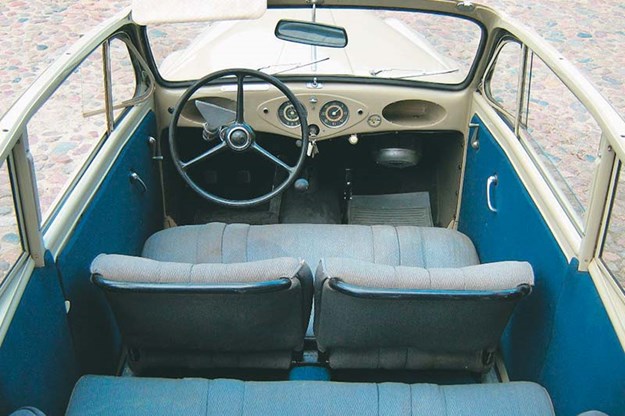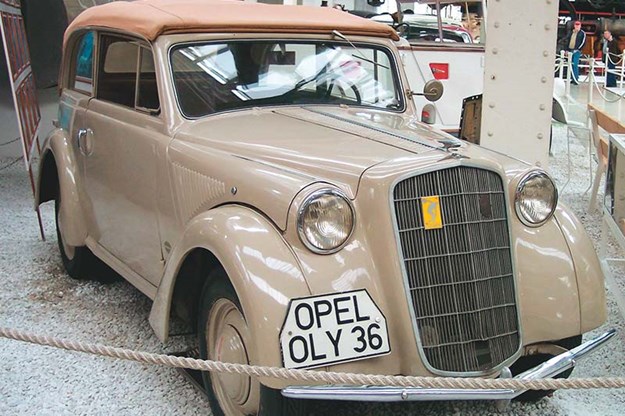1936 Opel Olympia - flashback
 The Olympia was first shown at the Berlin Motor Show in 1935. Under its humdrum skin lurked a technogically advanced design with a lightweight, all-steel monocoque body structure – GM’s first
The Olympia was first shown at the Berlin Motor Show in 1935. Under its humdrum skin lurked a technogically advanced design with a lightweight, all-steel monocoque body structure – GM’s first


|
|
The Olympia was first shown at the Berlin Motor Show in 1935. Under its humdrum skin lurked a technogically advanced design with a lightweight, all-steel monocoque body structure – GM’s first
|
GM's first monocoque - the 1936 Opel Olympia - was hugely influential in the design of Australia's first Holden says John Wright
Opel Olympia
While many enthusiasts understand what the Opel Olympia was, what it looked like, and what kind of performance it had, few seem to be aware of its significance in international automotive history in general, and of the first Holden in particular.
There is no question that the Opel Olympia of 1936 began to pave the road towards the 48-215 Holden of 1948. The book version of my PhD thesis on the history of the Holden – Special: The Untold Story of Australia’s Holden – gives some background on the Opel:
"The Olympia was the most significant car created by General Motors since the six-cylinder Chevrolet of 1927, and in terms of the Holden, its relevance can hardly be overstated. This was a four-cylinder model with better performance and fuel economy than its direct rivals, thanks mainly to a radical engineering approach which would bring great weight savings. By European standards the Olympia was a medium-sized vehicle but … the US perspective was that Chevrolet-size was typical.

"The design of the new Olympia probably started early in 1934, with a prototype on display at the Berlin Motor Show in February ’35 and production beginning the following year. It was much bigger (and more expensive) than the P-4, which would have been Opel’s Volkswagen, but this did not prevent the company from making reference to that project. On the occasion of the Olympia’s debut, Opel issued a press release which made passing reference to the People’s Car, while extolling the special qualities of the Olympia, especially its radical new load-bearing, all-steel bodyshell."

‘Opel has always striven to supply large sections of the population with full-sized cars at popular prices,’ read the press release. ‘With the Olympia it is giving a decided impetus to mass motoring in Germany at a time when this gap on the market has still not been filled. The new car dispenses with the previous separate chassis and body. The body framework can be compared with a steel bridge, which weighs very little yet is capable of effortlessly withstanding the most severe loads. This framework consists of sectional steel members linked together by the methods used in the construction of metal bodied aircraft.’
The engineer responsible for developing the world’s first mass-produced monocoque (the Citroen Traction Avant of 1934 was not truly mass-produced, certainly not in the mid-’30s) was one Russell S. Begg, who had held a number of very senior positions before joining General Motors and being sent to Opel. Significantly, he had been chief engineer at Budd – the auto industry pioneer in all-steel bodies.

Begg was appointed chief engineer at GM-H in 1945. He was almost certainly the best qualified person in the world for the job of developing a lightweight, high-powered, robust car that would prove perfect for early postwar Australian motoring conditions.
Begg applied the lessons he had learnt at Opel in the ’30s, but took them a stage further by choosing a six-cylinder engine instead of a four and keeping the weight to an absolute minimum.
Classic Australian Family Car Value Guide home page
Muscle Car Value Guide home page
Japanese Classic Car Value Guide home page
Unique Cars magazine Value Guides
Sell your car for free right here
Get your monthly fix of news, reviews and stories on the greatest cars and minds in the automotive world.
Subscribe

.jpg)












